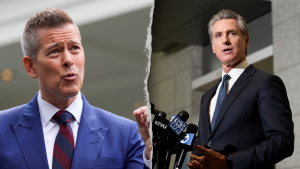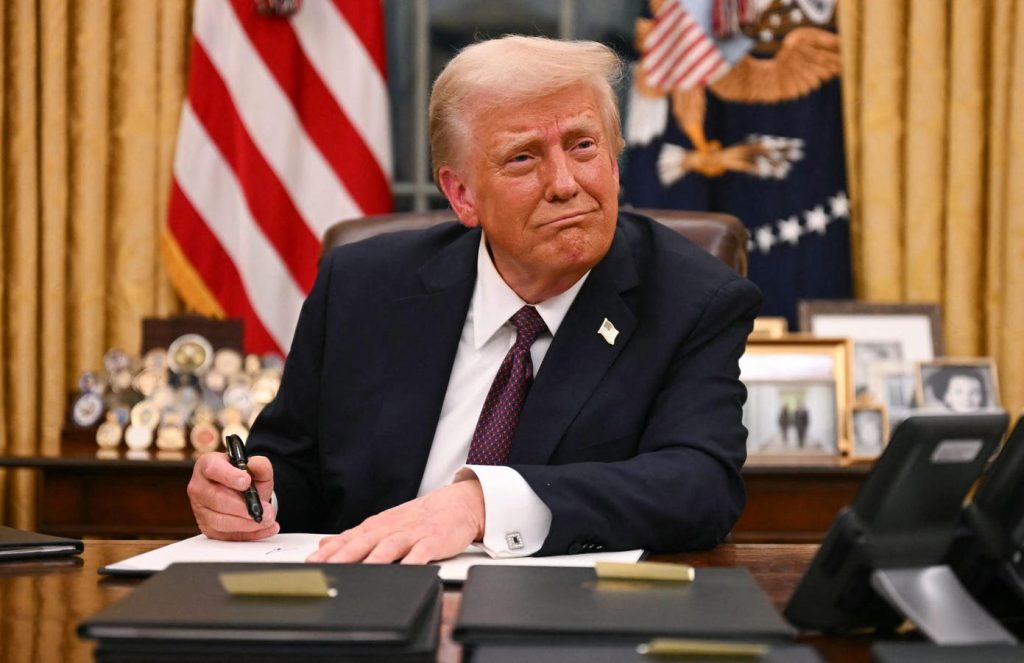The impending imposition of tariffs on Canadian and Mexican imports by the United States represents a complex and multifaceted economic and political maneuver with potentially far-reaching consequences. President Trump’s stated justification centers on addressing illegal immigration, fentanyl trafficking, and trade imbalances, with the added goal of revitalizing American manufacturing. However, the ultimate impact remains highly uncertain due to the fluid nature of the policy itself. The range of potential tariff structures – universal, selective, or temporary – coupled with the unknown retaliatory actions of Canada and Mexico, creates a scenario where predicting economic outcomes is exceedingly challenging. The administration’s past actions suggest a willingness to utilize tariffs as both a bargaining chip and a revenue-generating tool, further complicating the analysis.
The current baseline scenario involves a 25% tariff on all goods imported from Canada and Mexico. A key uncertainty lies in the potential exemption of crude oil, a crucial component of U.S. energy security. Canadian crude oil constitutes a significant portion of U.S. imports, and its exclusion from the tariffs would be economically prudent given the specific needs of American refineries. These refineries are largely configured to process heavier crude oils, like those from Canada and Saudi Arabia, and converting them to process lighter grades would be a costly and time-consuming undertaking. Furthermore, a tariff on Canadian oil would likely drive up domestic gas prices, a politically sensitive issue that could undermine the administration’s efforts to control inflation. Nevertheless, political considerations, particularly regarding border control and immigration, may outweigh economic logic, leaving the possibility of oil tariffs still on the table.
Selective exemptions for other goods, such as Mexican agricultural products, present another layer of complexity. Mexico is a major supplier of fresh vegetables to the U.S., and tariffs on these goods could lead to price increases for American consumers. However, such selective exemptions risk creating an uneven playing field, potentially inviting lobbying efforts from various industries seeking preferential treatment. Moreover, targeted tariffs can inadvertently exacerbate trade imbalances by incentivizing importers to source goods from countries not subject to the tariffs, thereby circumventing the intended boost to domestic production. This echoes China’s strategy of utilizing intermediary countries to reroute trade flows.
The possibility of using tariffs as a temporary negotiating tool also exists. The tariffs could be lifted if Canada and Mexico accede to U.S. demands regarding immigration and drug trafficking. However, the Trump administration’s prior experience with negotiating tariff reductions with China, which resulted in lower-than-promised purchases of U.S. exports, may influence the administration to prioritize imposing tariffs first and offering reductions only after negotiated agreements are fully implemented. This approach adds another layer of unpredictability to the situation.
Complicating the analysis further is the anticipated response from Canada and Mexico. Both countries have signaled their intention to retaliate with their own tariffs, potentially igniting a trade war. The nature and severity of these retaliatory measures will depend on the specifics of the U.S. tariffs. Such a trade war would have significant ramifications for numerous U.S. industries, especially the automotive sector, which relies on complex cross-border supply chains with both countries. The intricate web of interconnected production processes, where parts and partially finished goods frequently traverse the borders, makes this industry particularly vulnerable to disruptions caused by escalating tariffs.
Beyond the direct impact of tariffs and retaliatory measures, several other factors contribute to the overall complexity. Currency fluctuations, for instance, play a significant role. The Canadian and Mexican currencies have already depreciated against the U.S. dollar in anticipation of the tariffs. This depreciation could enhance the global competitiveness of their exports, partially offsetting the effect of the tariffs. Government intervention in the form of financial aid to affected industries and workers is another potential mitigating factor. Furthermore, Canadian and Mexican exporters might absorb some of the tariff costs or reduce prices to maintain their foothold in the U.S. market, lessening the burden on American consumers.
In essence, the evolving tariff situation presents a highly fluid and unpredictable landscape. The multitude of variables at play – the specific structure of the tariffs, the potential exemptions, the retaliatory responses from Canada and Mexico, currency fluctuations, government interventions, and exporters’ pricing strategies – makes it virtually impossible to accurately forecast the ultimate economic impact. Attempting to predict the consequences before the policy is finalized is akin to navigating uncharted territory with limited information. The current environment necessitates a high degree of preparedness and flexibility from businesses and policymakers alike, as the eventual outcome hinges on a complex interplay of political and economic forces.
The situation is reminiscent of former Secretary of Defense Donald Rumsfeld’s “known knowns and unknown unknowns” analogy, applied here to the realm of international trade. While certain aspects are clear – the intent to impose tariffs, the potential targets, and the likelihood of retaliation – the ultimate configuration of the policy, its duration, and its comprehensive effects remain shrouded in uncertainty. This ambiguity underscores the need for robust scenario planning and adaptive strategies to navigate the potential disruptions and capitalize on emerging opportunities. The ongoing developments necessitate a vigilant approach, recognizing that the eventual outcome will be shaped by a dynamic and evolving interplay of political and economic forces. The business community and policymakers must remain agile and prepared for a wide range of potential scenarios, acknowledging the inherent uncertainty surrounding this complex situation.
The core questions surrounding the tariff implementation remain unanswered. Will they primarily serve as a negotiating tactic, a revenue-generating mechanism, or a combination of both? Will they be applied universally, or will specific sectors be targeted? Will they be a permanent fixture or a temporary measure? And perhaps most fundamentally, will they be implemented at all? The only certainty is the current administration’s demonstrated willingness to disrupt established norms and pursue unconventional policy approaches. This necessitates a proactive approach from businesses and policymakers, preparing for a wide spectrum of potential outcomes and adapting strategies as the situation unfolds.
The complexity of the tariff situation necessitates a nuanced understanding of the interplay between economic and political forces. While the stated objectives focus on immigration, drug trafficking, and trade imbalances, the underlying motivations and the ultimate impact remain uncertain. The potential for unintended consequences, such as escalating trade wars, disruptions to established supply chains, and price increases for consumers, underscores the need for careful consideration and analysis. The current fluidity of the situation demands a flexible and adaptive approach, recognizing that the final outcome will be shaped by a complex and evolving set of factors.
The range of potential tariff structures, from universal to selective to temporary, further complicates the analysis. Each approach carries its own set of potential consequences, making it crucial to consider the specific details of the implemented policy. The possibility of exemptions for certain goods, such as Canadian oil or Mexican agricultural products, introduces another layer of uncertainty. These exemptions could be driven by economic considerations, political pressures, or a combination of both, further highlighting the complex interplay of factors at play. The uncertainty surrounding the specifics of the tariff policy makes it essential for businesses and policymakers to prepare for a wide range of scenarios.
Finally, the anticipated retaliatory responses from Canada and Mexico add another dimension to the challenge. The magnitude and nature of these responses will significantly influence the overall economic impact. The potential for a trade war, with escalating tariffs and counter-tariffs, could have significant disruptive effects on various industries and supply chains. This underscores the importance of considering not only the direct impact of U.S. tariffs but also the potential ripple effects of retaliatory measures. The complex and interconnected nature of the global economy makes it crucial to adopt a holistic approach to analyzing the potential consequences of this evolving tariff situation.










